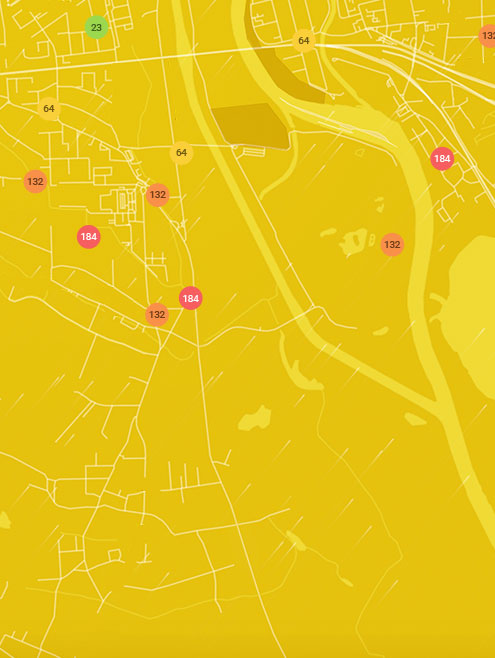Get a monitor and contributor to air quality data in your city.
17.6K people follow this station






AIR QUALITY DATA CONTRIBUTORS
Find out more about contributors and data sources| Weather | Few clouds |
| Temperature | 55.4°F |
| Humidity | 81% |
| Wind | 4.2 mp/h |
| Pressure | 30 Hg |
| # | city | US AQI |
|---|---|---|
| 1 | Cukarica, Central serb | 68 |
| 2 | Vracar, Central serb | 68 |
| 3 | Zemun, Central serb | 65 |
| 4 | Pancevo, Central Serbia | 63 |
| 5 | Cacak, Central Serbia | 59 |
| 6 | Kragujevac, Central Serbia | 59 |
| 7 | Zvezdara, Central serb | 58 |
| 8 | Vozdovac, Central serb | 55 |
| 9 | Belgrade, Central Serbia | 44 |
| 10 | Kraljevo, Central Serbia | 37 |
(local time)
SEE WORLD AQI RANKING
| # | station | US AQI |
|---|---|---|
| 1 | Valjevo | 62 |
(local time)
SEE WORLD AQI RANKINGUS AQI
62
live AQI index
Moderate
| Air pollution level | Air quality index | Main pollutant |
|---|---|---|
| Moderate | 62 US AQI | PM2.5 |
| Pollutants | Concentration | |
|---|---|---|
| PM2.5 | 17.3µg/m³ | |
| PM10 | 21.7µg/m³ | |
| NO2 | 8.3µg/m³ | |
| SO2 | 5.9µg/m³ | |
| CO | 140µg/m³ | |
| Sensitive groups should reduce outdoor exercise | |
| Close your windows to avoid dirty outdoor air GET A MONITOR | |
| Sensitive groups should wear a mask outdoors GET A MASK | |
| Sensitive groups should run an air purifier GET AN AIR PURIFIER |
| Day | Pollution level | Weather | Temperature | Wind |
|---|---|---|---|---|
| Thursday, May 2 | Moderate 58 AQI US | |||
| Friday, May 3 | Moderate 52 AQI US | |||
| Saturday, May 4 | Moderate 52 AQI US | |||
| Today | Moderate 62 AQI US | 73.4° 51.8° | ||
| Monday, May 6 | Good 34 AQI US | 75.2° 53.6° | ||
| Tuesday, May 7 | Good 33 AQI US | 75.2° 55.4° | ||
| Wednesday, May 8 | Good 48 AQI US | 66.2° 55.4° | ||
| Thursday, May 9 | Moderate 56 AQI US | 53.6° 51.8° | ||
| Friday, May 10 | Moderate 58 AQI US | 53.6° 50° | ||
| Saturday, May 11 | Moderate 58 AQI US | 62.6° 51.8° |
Interested in hourly forecast? Get the app
Contributor
Government Contributor